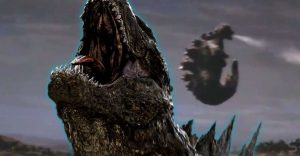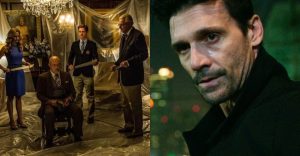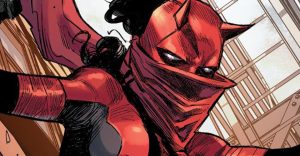Book of Boba Fett Finally Shows The Sand People As People

Careful! This article contains spoilers for The Book Of Boba Fett.
The Book Of Boba Fett gives a complex and humanizing depiction of the Sand People in Star Wars. The Tuskens, known informally as Sand People, are the native nomadic people of planet Tatooine, the homeworld of both Anakin and Luke Skywalker. Book Of Boba Fett puts the spotlight on their culture and humanity (despite them not actually being human), coding them as indigenous people. In doing so, it takes one of the most interesting aspects of the Star Wars: Knights Of The Old Republic video game and elevates it back into the Star Wars canon.
Tatooine was the world’s first introduction to the Star Wars universe, back in the original 1977 movie. Originally titled simply as Star Wars before being later renamed A New Hope, the initial concept was essentially a sci-fi mashup of old 20th-century movies, specifically American Spaghetti Western movies and Japanese Samurai films, particularly those by Akira Kurosawa — the word “Jedi” itself was derived from the word jidai-geki (時代劇), the Japanese name for period dramas. Within this idea, Tatooine is a world of frontier towns and space cowboys, with the Sand People fitting in as an allegory, intentional or otherwise, for Native Americans — and old Western movies are not known for portraying them favorably. Book Of Boba Fett tries to show the Sand People’s side of the story, framing them in a far more sympathetic lens than most Star Wars media. For the first two episodes, at least, it does this excellently.
Despite them commonly being called Sand People, most of Star Wars canon doesn’t really treat them as people at all, framing Tatooine’s natives as violent and dangerous barbaric raiders with little regard for life. Pushing back against this characterization, Book Of Boba Fett shows how the Tuskens are oppressed by people from other worlds, running trains across their ancestral lands and casually murdering them with impunity. In so doing, it puts them at the center of an entire storyline, finally giving Star Wars a good live-action depiction of the actual Tusken culture and making their plight deeply sympathetic. In so doing, Book Of Boba Fett also gives hints at the history of planet Tatooine itself, leaning heavily on the no-longer-canon ideas introduced by Knights Of The Old Republic (popularly known as KOTOR for short). Set thousands of years before the movies, KOTOR prominently features both Tatooine and its Tusken people, showing Tatooine as a fascinating world with a terrible history.
The Legends Backstory For The Sand People

Alongside an army of Sith, KOTOR’s major antagonists include an interstellar megacorporation called Czerka, who also exist in Star Wars canon. Their brand of villainy is purely motivated by profit, featuring in several storylines exploring themes such as capitalist exploitation, slavery, imperialism, and colonialism, and it does so in a far deeper way than most Star Wars media. The game is also the first appearance of the Krayt dragon, which made a live-action appearance in The Mandalorian. KOTOR’s Tatooine story explains that Czerka are there to try and exploit the planet’s resources and the Tuskens are doing their best to prevent this. It also talks about how Tatooine has apparently been colonized and then abandoned by off-worlders many times before. Playing the Light Side storyline involves speaking with the Tuskens, and gives the opportunity to learn all about their side of history.
KOTOR paints a picture of the so-called Tusken raiders as among the most victimized people in the whole Star Wars galaxy. The story goes that, long before the Republic or Jedi ever existed, Tatooine was a verdant world with oceans and forests, and the Tuskens had an advanced technological civilization. Their misfortune began as they started to learn space travel when they were enslaved by the first galactic superpower, the Infinite Empire, who enslaved many people across the galaxy and mercilessly stripped their worlds of resources. The Tuskens eventually managed to rebel against their captors but, as retribution, the Infinite Empire bombarded their homeworld with such ferocity that most of its surface was turned into glass, which later eroded into sand. This major event in Tatooine’s history was nothing less than a global apocalypse, leaving a few survivors who went on to become the nomadic Sand People familiar from movies and games. These survivors were then subjected to outsiders repeatedly coming from other worlds to try and exploit the resources of their planet again and again. With Tatooine so ravaged by exploitation and colonialism, the Tuskens have good reason to hate outsiders. From their perspective, off-worlders have brought them nothing but pain and misery.
The storyteller who explains all of this in KOTOR also stresses the connection they have to the land on which they live, employing a trope often used in fiction with indigenous-coded groups of people. The Tuskens consider the sands of Tatooine their ancestral lands and abhor the entire notion of removing themselves from the land the way the settlers do with their spacecraft. When Boba Fett warns the Pyke crime syndicate that these are the ancestral lands of the Sand People, it elevates this idea fully back into Star Wars canon.
How Sand People Are Treated In The Movies

The core movies in the Star Wars franchise hold an extremely dim view of the Tuskens. A New Hope shows them as little more than murderous and animalistic brutes. Obi-Wan Kenobi hints that there’s more to them, but he appears to know this only from the perspective of someone who’s had to fight against them. In their first appearance, they’re barely people at all, acting purely as decoration to stress how Tatooine is a dangerous and savage place. Or at least, this is the view taken by the “civilized” people who the story revolves around.
Arguably the worst depiction of the Tuskens was in Star Wars: Attack Of The Clones. The group of Sand People who imprisoned Anakin’s mother, Shmi Skywalker, were shown as unquestionably villainous, but it’s never actually revealed why they captured her. In the text of the movie, they’re simply inflicting needless cruelty for no particular reason. Then Anakin murders them for it. His line, “they’re like animals, and I slaughtered them like animals,” is chilling and very clearly meant to show how influenced he is by the Dark Side, but it ultimately has little consequence for his story.
If Anakin had told Padme how he’d slaughtered an entire village of settlers from off-world, small children and all, she’d probably have fled back to Naboo in horror. The Tuskens, however, are depicted as inhuman, monstrous, and ultimately disposable, leaving Padme to apparently forget all about Anakin committing an atrocity with alarming speed. As Anakin’s most villainous act before becoming Darth Vader, Star Wars: The Clone Wars and Star Wars: Revenge Of The Sith seem to quietly acknowledge that this was a step too far, doing their best to show Anakin as an actual paragon hero before his ultimate fall to the Dark Side. His atrocity committed against the Sand People of Tatooine foreshadows his later atrocity in the Jedi Temple of Coruscant, but the only reason it was so easily dismissed was that the Sand People had never been shown as actual people.
The Sand People and Representation

Star Wars has never been great with its representation of minorities. This is not a controversial thing to say, and has been discussed at length by many critics and essayists over the years. Aside from the toxic Star Wars fans and the way women of color are frequently cast in roles that involve them being literally painted a different color, Star Wars has been criticized for a variety of problematic racial coding. Regardless of authorial intent, many people have pointed out that certain characters bring to mind outdated and harmful stereotypes. The Tuskens are interesting in this regard though. People who point them out as a potentially harmful representation are typically met with dismissive and even insulting responses (via Quora), even though their concept and design clearly carry some influence from the nomads of Northern Africa, such as the Amazigh and Touareg people of the Sahara. Even the planet itself is named after a city, Tataouine, in Tunisia, the country where Star Wars was originally filmed.
While Book Of Boba Fett puts in a lot of work to show the personality and culture of Tatooine’s native people in its first two episodes, it feels like a poor creative decision that their story ends with them all being murdered off-screen in the third episode. Some Native American viewers were excited to see a genuine effort to show real-world indigenous cultures depicted on screen in the Sand People, praising the portrayal for its competence in drawing from a wide range of influences (via Gizmodo). This makes the massacre of the Sand People’s village carry a lot more emotional weight, but not necessarily in a good way. Once again, the indigenous people are ultimately a disposable plot device. Expanding them to play a persistent role in the story would likely have been more powerful than the Tuskens’ off-screen slaughter, which amounted essentially to fridging them en masse.
That said, other audience members with indigenous backgrounds have pointed out that the scene from Book Of Boba Fett reflects the real-life story of Goyaałé, an Apache warrior more commonly known as Geronimo (via Twitter). The experience Boba Fett has, returning to find his entire (adoptive) family murdered, is one which people like Geronimo actually had to live through, as a direct result of not dissimilar conflicts against colonizers and oppressive outside forces, all of whom similarly refused to acknowledge the humanity of native people. The result is that Book Of Boba Fett elicits some complex feelings about morality and the Tuskens’ depiction. It’s perfectly reasonable to be upset that they’re still seemingly treated as disposable but, at the same time, it’s also possible to appreciate the care and detail given to their time in the spotlight and the fact that their untimely demises reflect real-life atrocities in an extremely visceral way. Whether or not this is good representation is still a matter of debate, but it’s refreshing to see Star Wars make an effort.
At the time of writing, The Book of Boba Fett is still only on episode 4, so there’s still more of the story left to tell. It’s unclear whether or not any Sand People escaped the massacre, or whether the story will include more Tuskens later on — though it would certainly be a pity to give them such detail in the opening of the show, including saving Boba Fett’s life, only to drop them completely going forward. The representation given in Star Wars may still have a long way to go but Book Of Boba Fett is undeniably a step in the right direction.
- Rogue Squadron (2023)Release date: Dec 22, 2023
About The Author

















